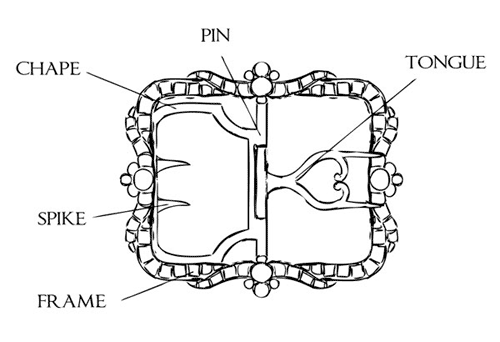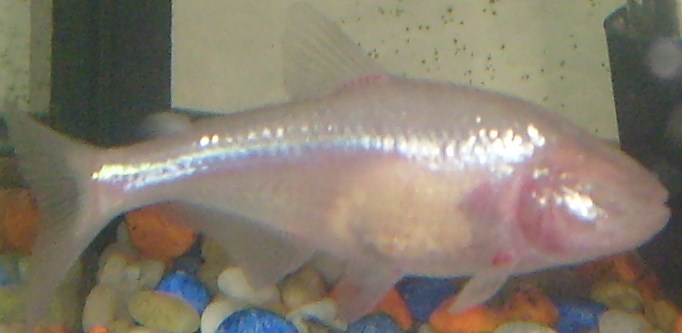Friday Fun Facts - 3/14/2014

Here are this week's Friday Fun Facts about Diana Gabaldon's books.

1) This painting shows an 18th-century sailing ship illuminated by St. Elmo's fire.
My hair, like my skirts, was drying in the wind; the strands of it danced on my head, pulling at the roots. As it dried, I felt the crackle of static electricity where my hair brushed my cheek. There was a sudden movement among the sailors around me and I looked up, to see the spars and rigging above coated in the blue phosphorescence of St. Elmo’s fire.What exactly is St. Elmo's fire? From Wikipedia:
(From VOYAGER by Diana Gabaldon, chapter 63, "Out of the Depths". Copyright© 1994 by Diana Gabaldon. All rights reserved.)
Physically, St. Elmo's fire is a bright blue or violet glow, appearing like fire in some circumstances, from tall, sharply pointed structures such as lightning rods, masts, spires and chimneys, and on aircraft wings. St. Elmo's fire can also appear on leaves, grass, and even at the tips of cattle horns. Often accompanying the glow is a distinct hissing or buzzing sound. It is sometimes confused with ball lightning.For more information on the phenomenon, look here and here.

2) Henri Rousseau (1844-1910) was a French Post-Impressionist painter. I had never heard of him before I read DRUMS OF AUTUMN:
As I watched, a great head broke water in the middle of the stream, water purling back from the pointed snout. There was a fish struggling in Rollo’s jaws; the flap and gleam of its scales showed briefly as he shook his head violently to break its back. The huge dog swam slowly to the shore, shook his coat briefly, and stalked away, his evening meal dangling limp and shimmering from his jaws.The painting shown above is called "Jungle with Lion". Click on the image for a bigger view.
He paused for a moment on the far edge of the creek, looking at me, the ruff of his hackles a dark shadow framing yellow eyes and gleaming fish. Like a primitive painting, I thought; something from Rousseau, with its contrast of utter wildness and complete stillness.
(From DRUMS OF AUTUMN by Diana Gabaldon, chapter 2, "In Which We Meet a Ghost". Copyright© 1997 by Diana Gabaldon. All rights reserved.)
Here's a collection of Rousseau's paintings.

3) This is a pair of silver shoe buckles that belonged to Flora MacDonald in the 1770s. She gave them to a friend in North Carolina shortly before she returned to Scotland. I saw them on display at the North Carolina Museum of History in Raleigh, NC.

Shoe buckles in the 18th century were constructed somewhat differently than their modern counterparts. This diagram shows the parts of a typical 18th-century shoe buckle, worn by both men and women. According to Wikipedia:
Separate buckles remained fashionable until they were abandoned along with high-heeled footwear and other aristocratic fashions in the years after the French Revolution although they were retained as part of ceremonial and court dress until well into the 20th century.18th-century shoe buckles were designed to be easily removable, as we saw in this scene from THE SCOTTISH PRISONER, where Lord John and Tom Byrd are getting Jamie properly outfitted for his first visit to the Beefsteak in London:
"Will those do for the Beefsteak, do you think, me lord?” [Tom Byrd] squinted doubtfully at the shoes on Jamie’s feet, these being the sturdy objects borrowed from Lady Joffrey’s chairman. They had been buffed and polished to the limits of the bootboy’s capability but were not intrinsically fashionable.You can see step-by-step instructions for attaching 18th-century shoe buckles here. If you want to see the process in more detail, here's a video explaining exactly how it's done.
Grey joined Tom’s scrutiny and lifted one shoulder in a shrug.
“Change the buckles, and they’ll do. Take the silver-gilt ones from my brown calfskin court shoes. Mr. Fraser?” He motioned delicately at Jamie’s feet, and Jamie obligingly stepped out of the objects in question, allowing Tom to take them away.
(From THE SCOTTISH PRISONER by Diana Gabaldon, chapter 12, "The Belly of a Flea". Copyright© 2011 by Diana Gabaldon. All rights reserved.)

4) The blind cave fish (scientific name Astyanax mexicanus) is a type of Mexican tetra that lives in caves in Central America. (Photo from Wikipedia.)
Lying in the center of the cloth was a small dried fish, much like those darting about in the spring, save that this one was pure white. It was also blind. On either side of the blunt head, there was a small swelling where an eye should have been, but that was all.
[....]
I peered more closely at the fish, which Stern was examining with the rapt joy of the born naturalist. The skin was very thin, and so transparent that the shadows of the internal organs and the knobbly line of the vertebrae were clearly visible, yet it did have scales, tiny and translucent, though dulled by dryness.
“It is a blind cave fish,” Stern said, reverently stroking the tiny blunt head. “I have seen one only once before, in a pool deep inside a cave, at a place called Abandawe."
(From VOYAGER by Diana Gabaldon, chapter 50, "I Meet a Priest". Copyright© 1994 by Diana Gabaldon. All rights reserved.)

Here's another view of a blind cave fish. (Photo credit: Chris Bell, on Flickr.) If you're wondering what would cause an entire species of fish to evolve without eyes, check out this article from December, 2013, about a new and controversial theory regarding the evolution of these fish.
5) Long before Francis Scott Key wrote the lyrics to "The Star-Spangled Banner", there was a popular 18th-century song called "To Anacreon in Heaven". You may remember this scene near the beginning of DRUMS OF AUTUMN:
A clear tenor voice, wobbly with drink, but sweet nonetheless, was singing a familiar tune, audible over the babble of talk.You can see the lyrics here. This tune, which became the official song of the Anacreontic Society (an 18th-century gentleman's club), was composed by John Stafford Smith, and first published in 1778.
"To Anacreon in heav'n, where he sat in full glee,The singer's voice cracked painfully on "voice, fiddle, and flute," but he sang stoutly on, despite the laughter from his audience. I smiled wryly to myself as he hit the final couplet,
A few sons of harmony sent a petition,
That he their inspirer and patron would be!
When this answer arrived from the jolly old Grecian:
'Voice, fiddle, and flute,
No longer be mute!
I'll lend you my name and inspire you to boot.'"
"'And, besides, I'll instruct you like me to entwine,(From DRUMS OF AUTUMN by Diana Gabaldon, chapter 1, "A Hanging in Eden". Copyright© 1997 by Diana Gabaldon. All rights reserved.)
The Myrtle of Venus with Bacchus's vine!'"
I love that little scene in DRUMS, particularly the bit where the singer's voice cracks at precisely the same point in the song that gives modern singers trouble. <g> (Some things never change....)
I hope you enjoyed these Friday Fun Facts! Look here to see all of my Friday Fun Facts blog posts. And please come back next week for more!







I'm glad you pointed out the NC museum of history. I really must visit!